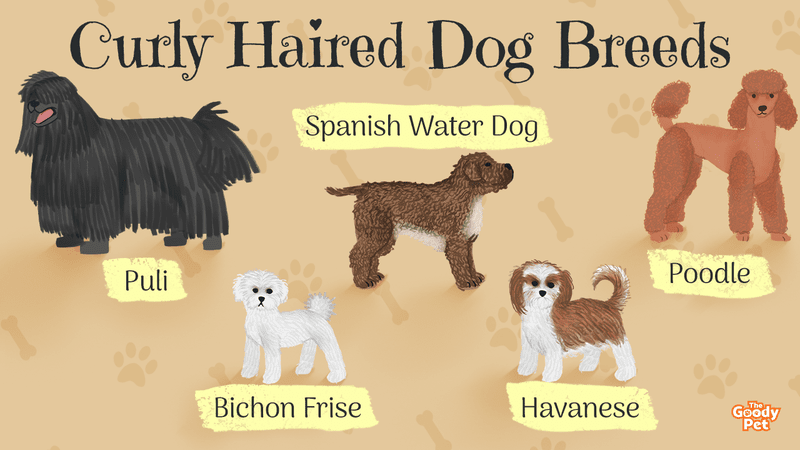Perfectly coiffed with natural coils, curly haired dog breeds are indeed one of a kind. Aside from their distinctive looks, those tight curls are there for a reason – for better insulation, to keep their coats from shedding, and protection from harsh weather. Today, the spotlight is on these pups!
Poodles, just like the Curly Coated Retriever, have abundant coils that keep them warm when they retrieve game in the chilly waters. As for the Bichon Frise’s soft and fluffy curls, these add a cozy layer of protection to this tiny pup’s delicate body.
No matter what the purpose for these lush curls, we can’t deny the fact that they add to these dogs cuteness factor! Let’s round up these curly haired dog breeds and learn more about how to keep these coils looking perfect every time.
21. Poodle
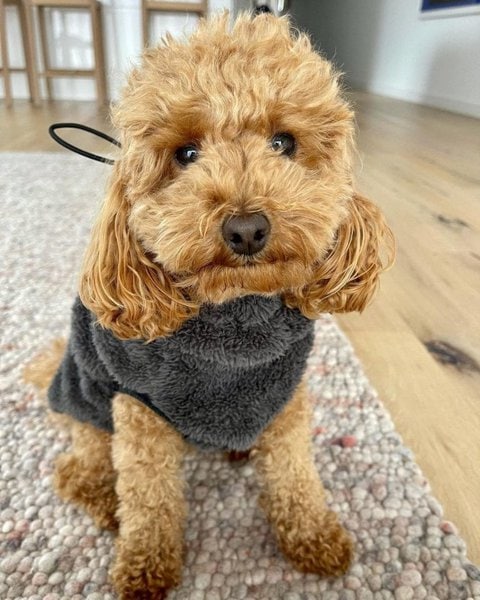
When you think of a curly haired pup, the Poodle is most likely to come to mind. Known for their tight curls, these dogs come in different sizes – toy, miniature, and standard. No matter how big or small, they will always have their signature coils that add to their appeal.
But these curls are also there for a reason – to keep these pups warm each time they get into the water to retrieve game. Trimming these curls to stave off mats and tangles is important as part of their grooming needs.
20. Bichon Frise
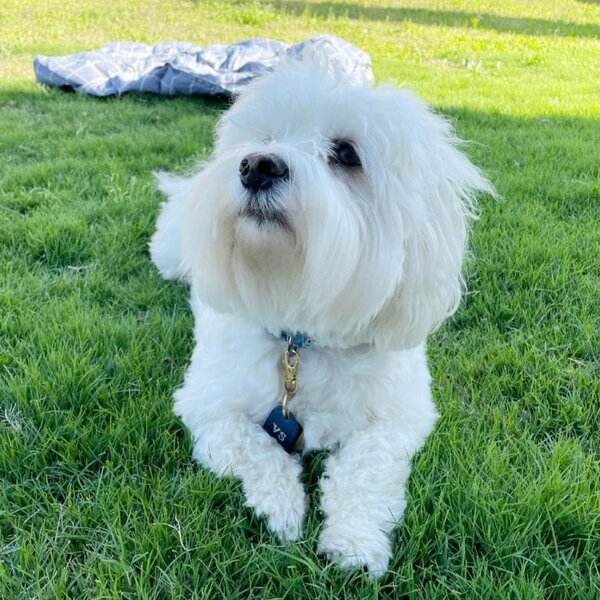
The Bichon Frise is among the most popular curly-haired dog breeds in the world. They have powder-puff white coats, which give these pups a pom-pom look!
To keep their curls nice and fluffy, regular brushing is an absolute must. Otherwise, their coarser guard hairs may form mats, which can be quite painful for your pooch.
19. Irish Water Spaniel
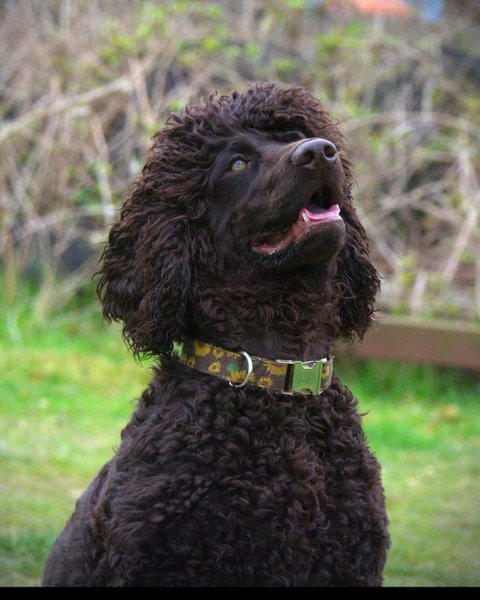
Just like many water dogs, the Irish Water Spaniel has an abundant coat with solid curls. This double coat of coils adds insulation to their bodies, so they can easily retrieve game in the water while staying nice and warm.
What’s unique about these pups, though, is that it’s only their body and limbs that have tight curls. Their tail and face have shorter and smoother hair. Brush or comb their coats weekly and take them to the groomer every 6 weeks for a trim.
18. Pumi
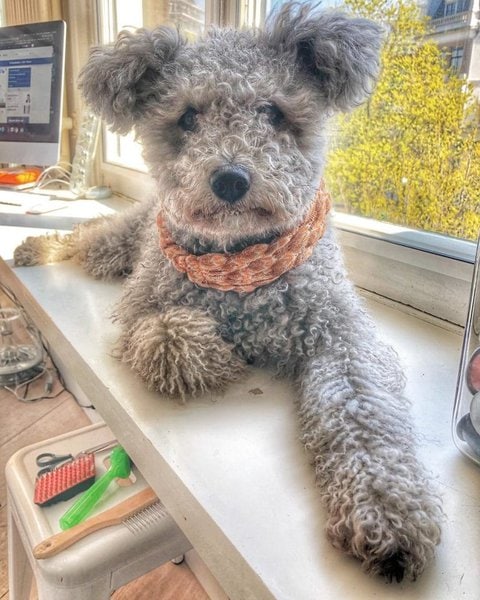
A Pumi’s coat is a combination of smooth waves and tight curls all over their body. It’s interesting that they start out with just a slightly wavy or straight hair. But as they grow, the guard hairs get thicker and coarser, giving them those tight curls.
With tight, complex curls come certain grooming requirements. Hand-stripping, clipping, combing, and air-drying after bathing are ways to keep these coils fluffy. Never blow-dry them, or their curls will look flat and dull.
17. Bouvier De Flandres
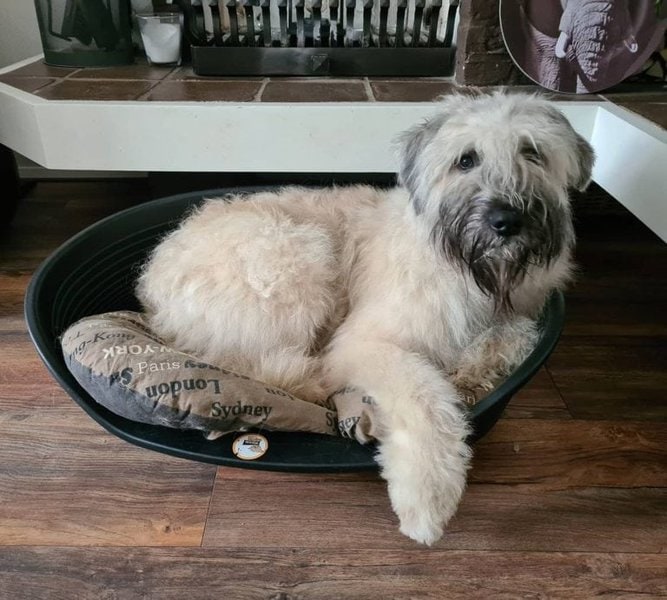
A genuine farm dog right at the core, the mighty Bouvier des Flandres is a fluffy, sweet pooch. They were bred to herd and guard, so having a thick coat full of curls helps during harsh climates with freezing temps.
Although these dogs don’t shed as much, grooming can be tricky because of their dense curls. A regular visit to the groomer a few times a month is a must for the general upkeep of their crowning glory.
16. Bedlington Terrier
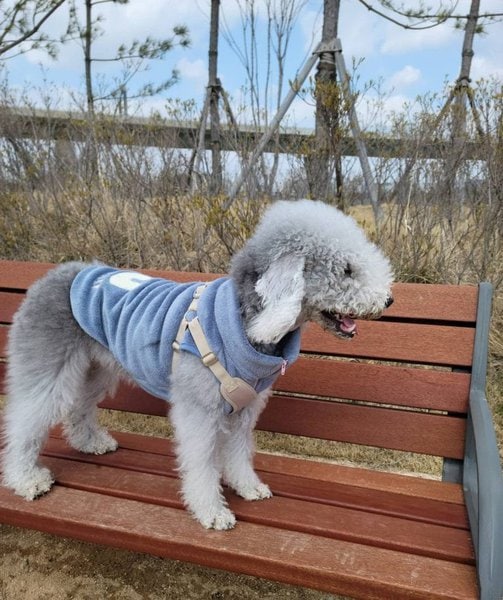
At first glance, Bedlington Terriers look a bit like a lamb – with soft and fluffy curls and delicate limbs. They have extra curly heads that add a bit of height while the rest of their body has coarser coils.
Just like many curly haired dog breeds, the Bedlington is shed-free. But they do need weekly brushing to keep their curls from matting. A trim every 8 weeks is also essential to keep their coats in a great condition.
15. Lagotto Romagnolo
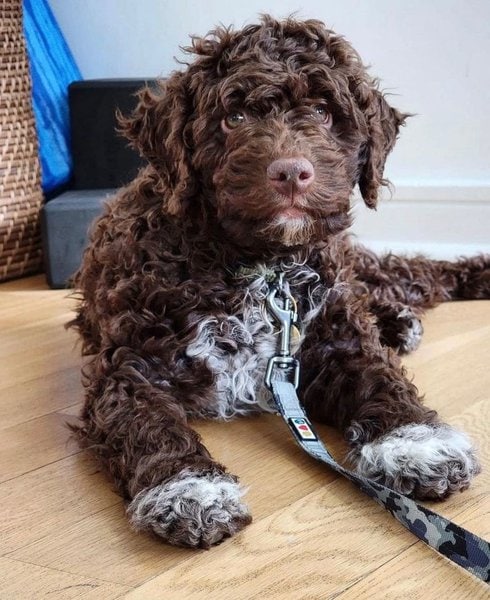
The Lagotto Romagnolo literally means, “Lake Dog”, as these pups were bred to hunt and retrieve waterfowls in Italy’s wet marshlands. This hard working pooch relies on its abundant curly coat for protection and insulation from the cold waters.
As for grooming requirements, it is relatively simple. Brush their coat regularly, bathe and trim overgrown hairs to keep debris at bay.
14. Puli
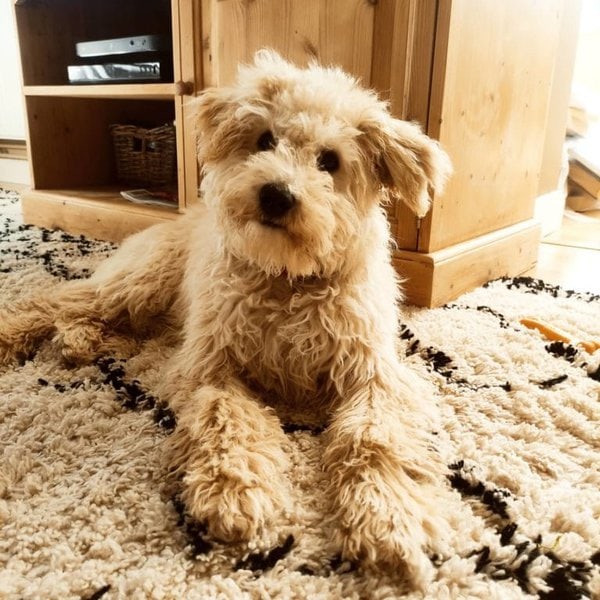
A dependable sheep herder and guard dog, the Puli has a close resemblance to the Komondor. Their coats are often corded, which gives them the appearance of a mop-head. But some Puli dogs tend to have brushed-out and fluffier curls.
If you look closely into a Puli’s coat, you’ll notice it is a combo of a rough exterior coat and a soft and fluffy undercoat. The guard hairs tend to naturally turn into felted cords as they get older, though. Regular baths and hand stripping helps to keep these cords nice and clean each time.
13. Kerry Blue Terrier
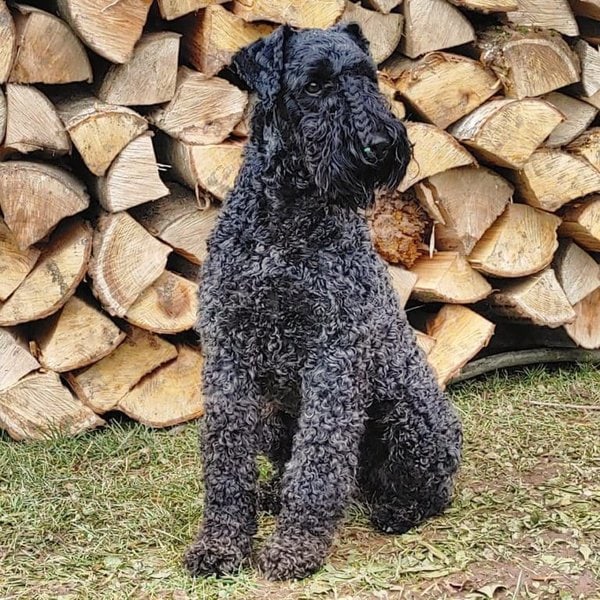
As the name implies, Kerry Blue Terriers have bluish-gray coats. This is one of their hallmark features, with textures varying from dense, wavy, and soft.
Regular grooming and brushing are very important to keep the Kerry Blue’s hair soft and mat-free. Trimming it every 6 weeks or so should also be a part of the grooming regimen to keep tangles and debris away.
12. American Water Spaniel
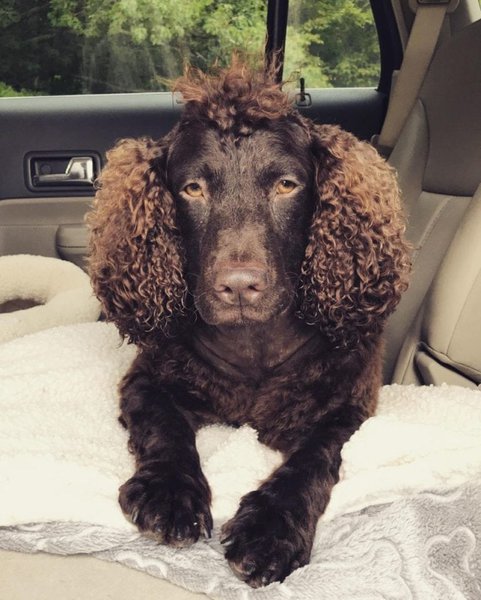
A smart and active hunting companion, the American Water Spaniel is a skilled retriever and swimmer. They adore the water and will never hesitate taking a dip and splashing around. With their curly coats keeping them warm, it’s like wearing a proper swimsuit for these pups!
The AWS needs regular brushing to ensure the health and smoothness of their coats. You should also trim it every couple of months to maintain strong and tangle-free fur.
11. Komondor
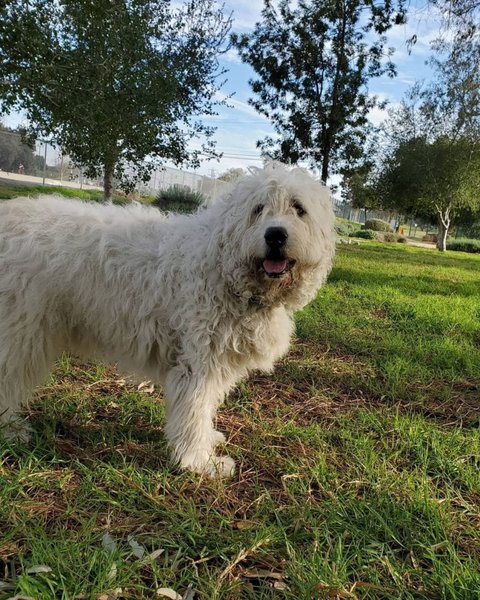
Famous for its long and flowing dreadlocks, the Komondor is one extraordinary pooch. But their long, mop-like coat is there for a reason – for protection from harsh weather and to blend in with the sheep it’s herding.
But unlike other curly haired dog breeds, there’s no need to brush the Komondor’s coils. Regular bathing and towel-drying should suffice to keep them clean and odor-free.
10. Spanish Water Dog
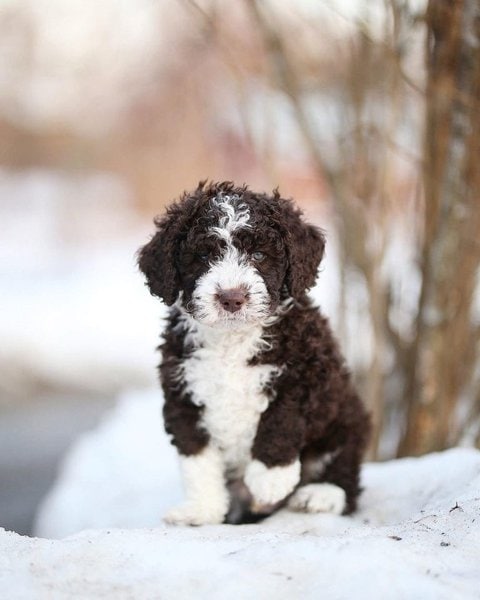
Originally designed to retrieve waterfowl and to herd sheep, the Spanish Water Dog has the build and thick coat for such demanding jobs. These pups have wooly coils in brown, black, beige, or a combination of these colors with white markings.
The AKC standard for this breed is to keep the coat in one similar length. Brushing isn’t a necessity, either, but you need to trim or clip the curls every 2 months to keep them from forming cords or mats.
9. Havanese
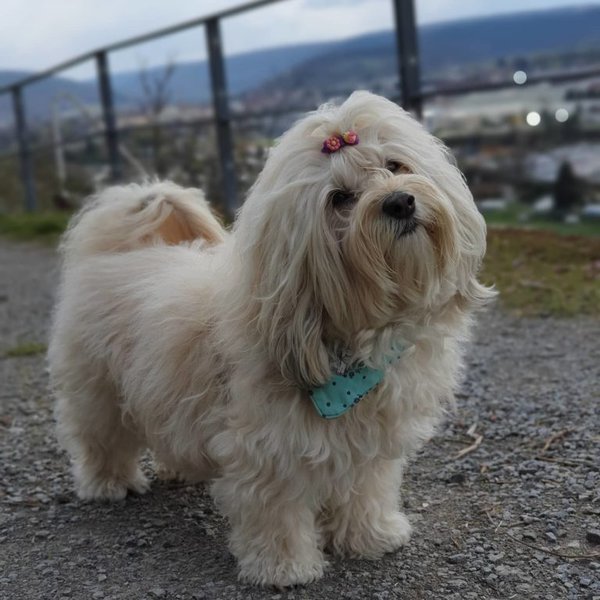
A tiny ball of fluff, Havanese dogs come in a wide range of coat colors including gold, chocolate, black, red, and white. Their coats may either be curly or wavy while others are a combination of both.
Grooming these miniature doggos should not be tough considering their miniscule build. But we do recommend a daily brushing not only to remove debris but to keep painful mats at bay.
8. Gordon Setter
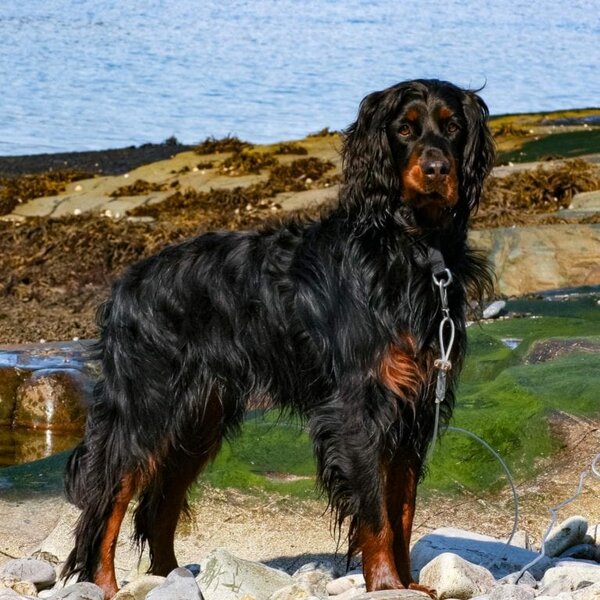
For the most part, Gordon Setters have silky and smooth hair all over, often in medium-lengths. But their ears get more waves and sometimes longer curls, which add to their unique appeal.
Weekly brushing, especially on their ears, is a must to keep them free from tangles and debris. As these are active and agile dogs, a nice bath once a week followed by brushing their wavy coats should keep them picture-perfect.
7. Portuguese Water Dog
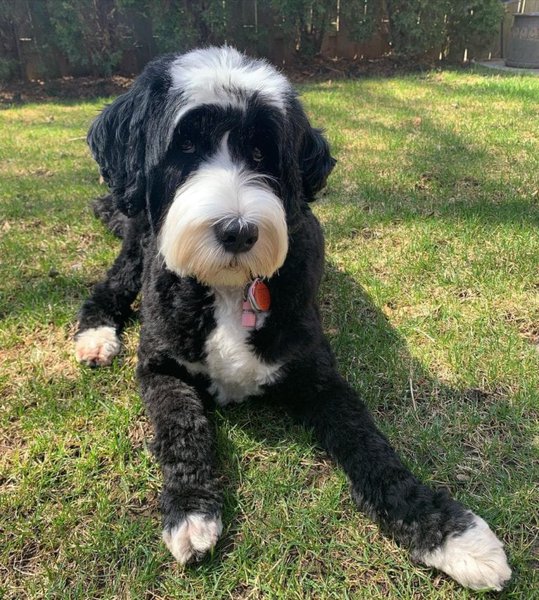
Another sporty swimmer pooch, the Portuguese Water Dog is an active pup with an abundant amount of curls for its coat. These dogs were bred to rescue drowning sailors and to retrieve a lost tackle. Thus, their tight curls serve a great purpose of keeping them warm when in the frigid waters.
With their hypoallergenic coats, these dogs are suitable for folks with allergies. They need regular grooming, however, or opt for a shorter clip for easy maintenance.
6. Black Russian Terrier
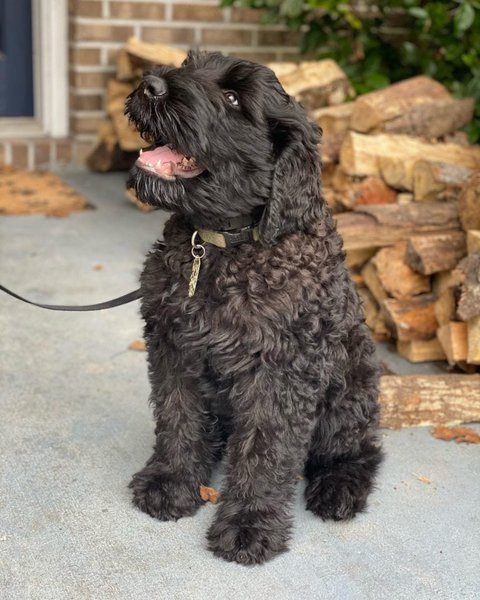
Tipping the scale at 130 lbs, the massive Black Russian Terrier is one of the largest curly haired dog breeds on the planet. They are agile pups that adore playing and hunting, and their thick coils give them ample protection from harsh weather conditions.
As for their grooming needs, they only need regular brushing to keep their wavy coats mat-free. A monthly visit to the salon can also help maintain the shine and smoothness of their curls.
5. Cocker Spaniel
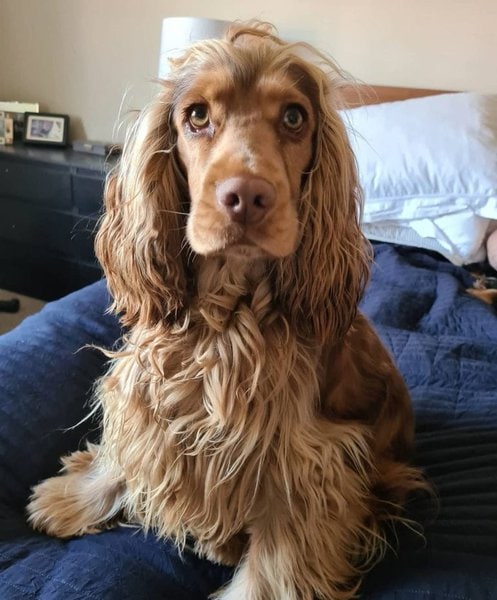
Cocker Spaniels usually have slight loose waves instead of tight curls. Their hair is soft and smooth, which makes them so pleasant to touch.
However, there are certain grooming requirements to keep their wavy curls looking great. They need a trim every 6 weeks, otherwise their curls can form mats and tangles.
4. Barbet
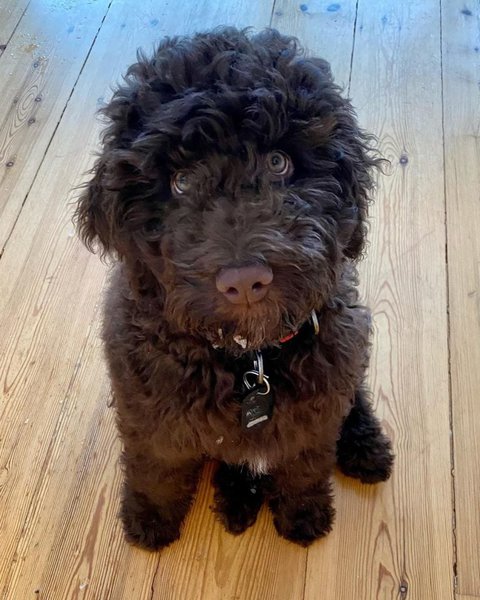
These medium-sized pups are known for their wooly, curly locks. Their coats are also quite thick, which provides ample protection from the chilly waters whenever they retrieve waterfowl and game.
Because of their dense curls, it can be a bit of a challenge to keep them well-groomed. Brush and comb their hair a few times a week to prevent them from getting into one huge tangled mess. Regular salon visits are also essential to maintain a desirable shape and hair length.
3. Curly Coated Retriever
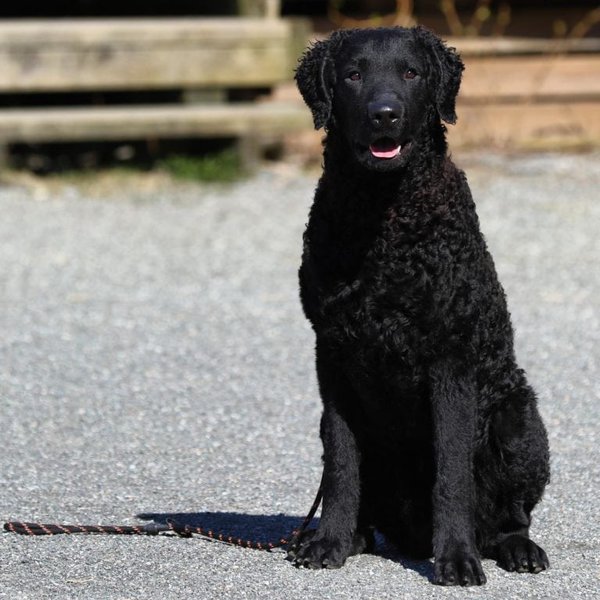
Curly Coated Retrievers are not only one of the largest but they are also among the oldest breeds. They are excellent hunting companions that help with retrieving game from rivers and lakes, as well as dense woods with thorns and brambles.
With their tight, dense curls, this provides great protection from the harsh environment and fickle weather. It is best to comb their curls instead of brushing them to prevent a frizzy look.
2. Bolognese
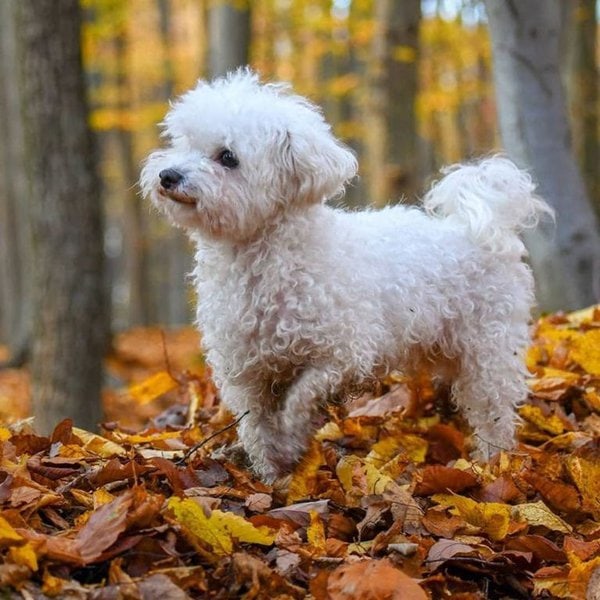
Quite similar in some ways to the Bichon Frise, the Bolognese is famous for its medium-length wavy fur. This immaculate white coat is also soft to the touch, like a big ball of cotton!
But with the extra length to their coat comes one important requirement – regular brushing and grooming. To keep these waves free from mats and knots, you need to brush their coat a few times per week or even every single day for best results.
1. Airedale Terrier
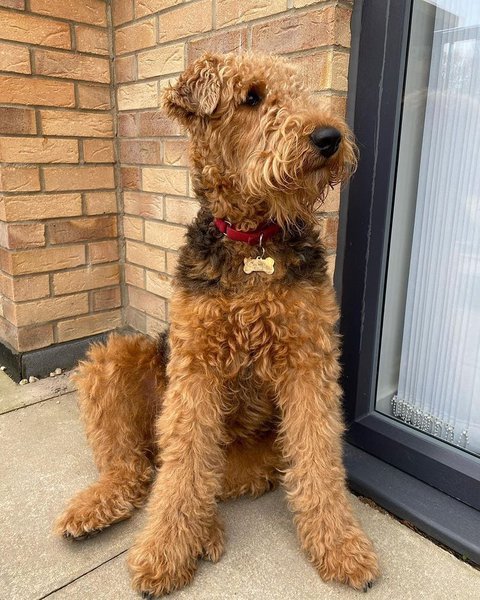
Towering over the other Terrier breeds, the Airedale is covered with a dense, wiry, curly coat. These pups may either have a wavy or a tightly curled coat in shades of brown and tan, which can either be soft or coarse to the tough.
Although their coat may seem too complex to style, Airedales are actually low-maintenance pups. They don’t shed as much, which makes them hypoallergenic canines suitable for allergy sufferers. A weekly brushing session is a must, though, to keep their thick coats tangle-free.
Related Questions
Do Curly Haired Dogs Shed? Curly haired dogs are low-shedding, which makes them hypoallergenic. Since they do not shed as much, most people with allergies are able to tolerate these canines. Instead of sticking to your furniture, loose hair gets stuck on their curly hair, which regular brushing can help in getting rid of.
How Do You Cut A Curly Haired Dog? Cutting a curly haired dog is actually a simple process, no matter how complex it may appear to be. Always start with your puppy’s paws, then up the legs, underside, and then working your way up to its head and then the belly area. Be sure to cut evenly to achieve a desirable length and look.
Can You Put Hair Gel On A Dog? Never put hair gel on a dog, especially if these are rated only as safe for humans. Even non-toxic hair gel is not ideal to use as these can pose health issues to your pet. The best thing to do is to find a safe and vet-approved alternative for styling your dog’s hair.

